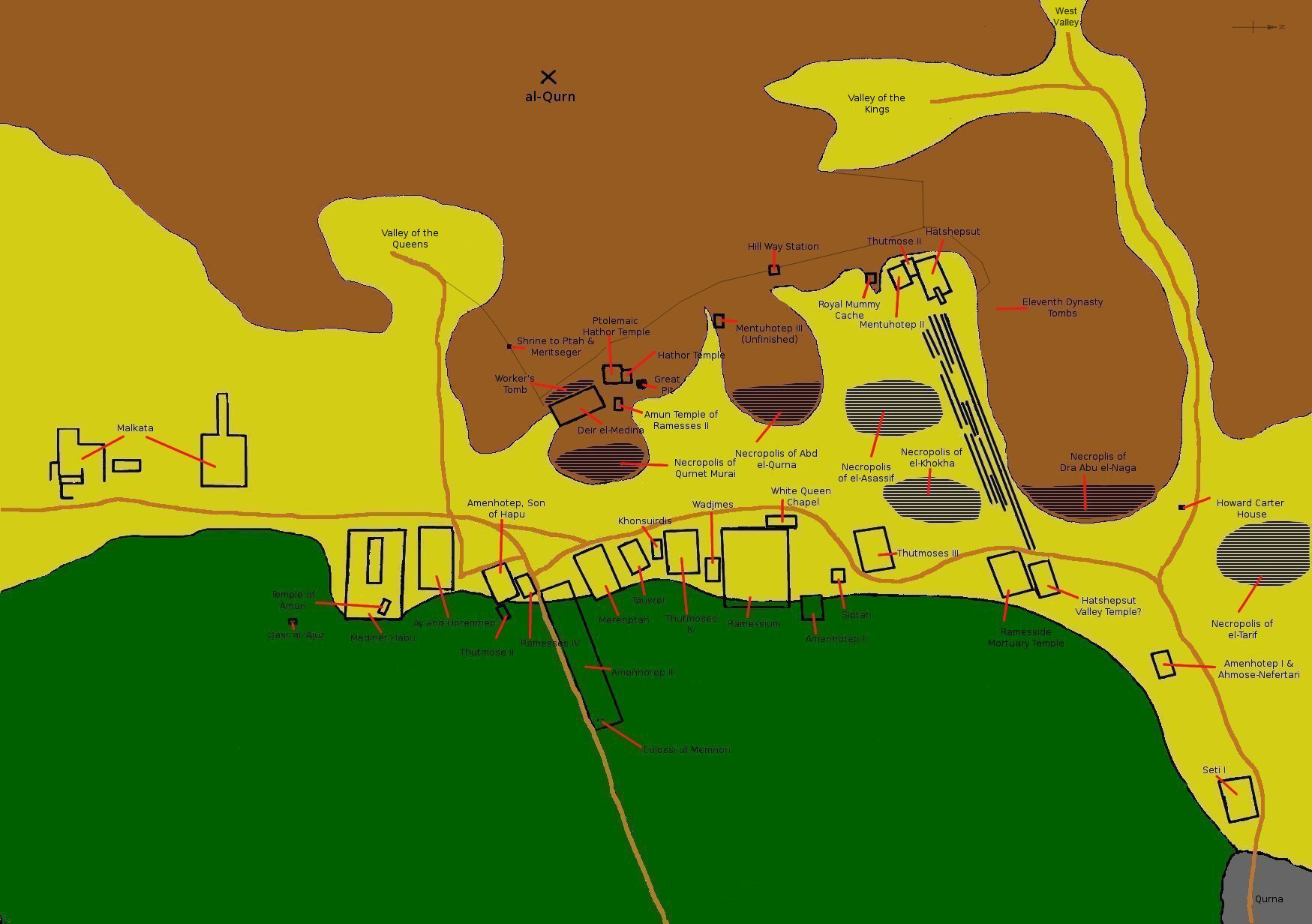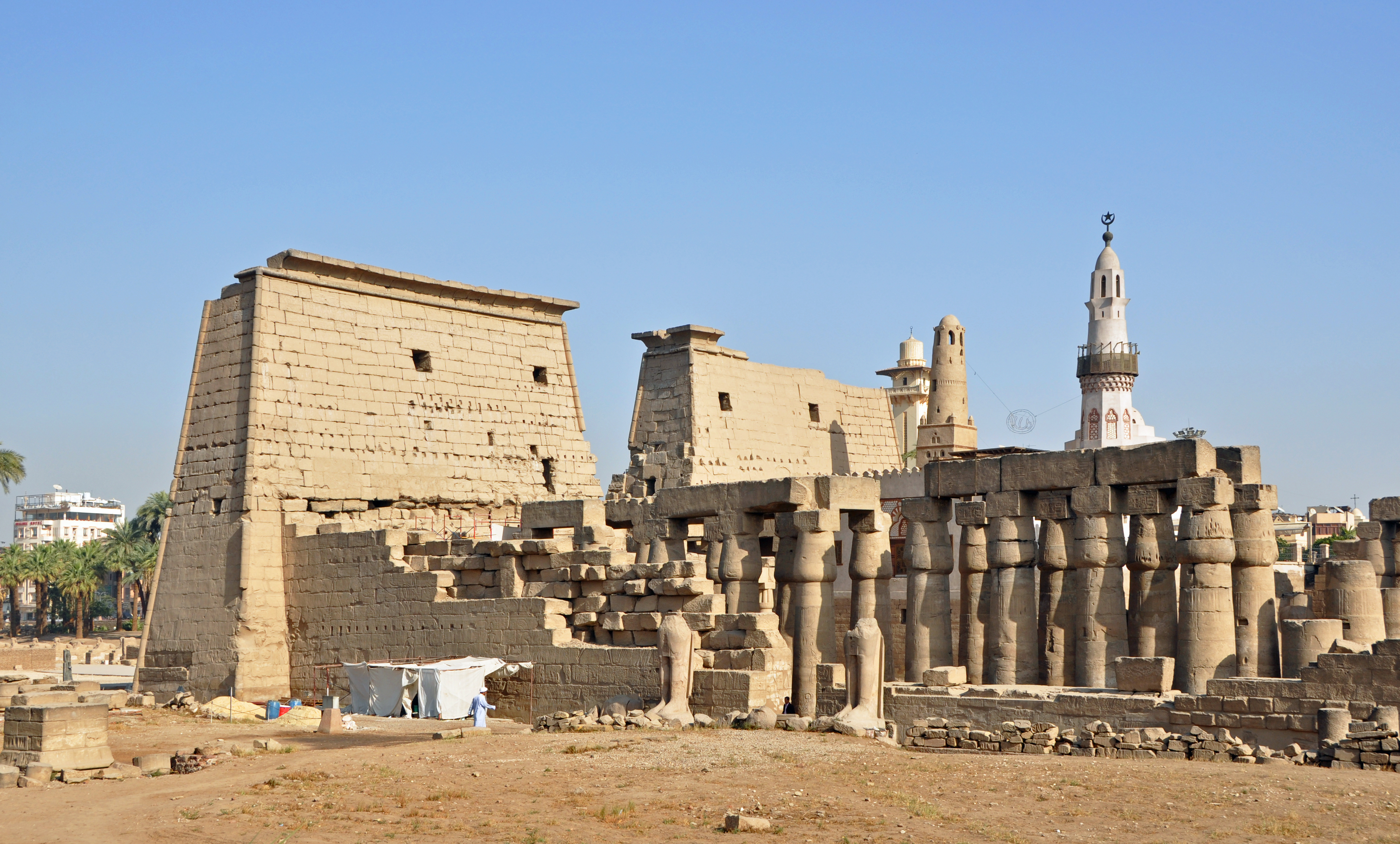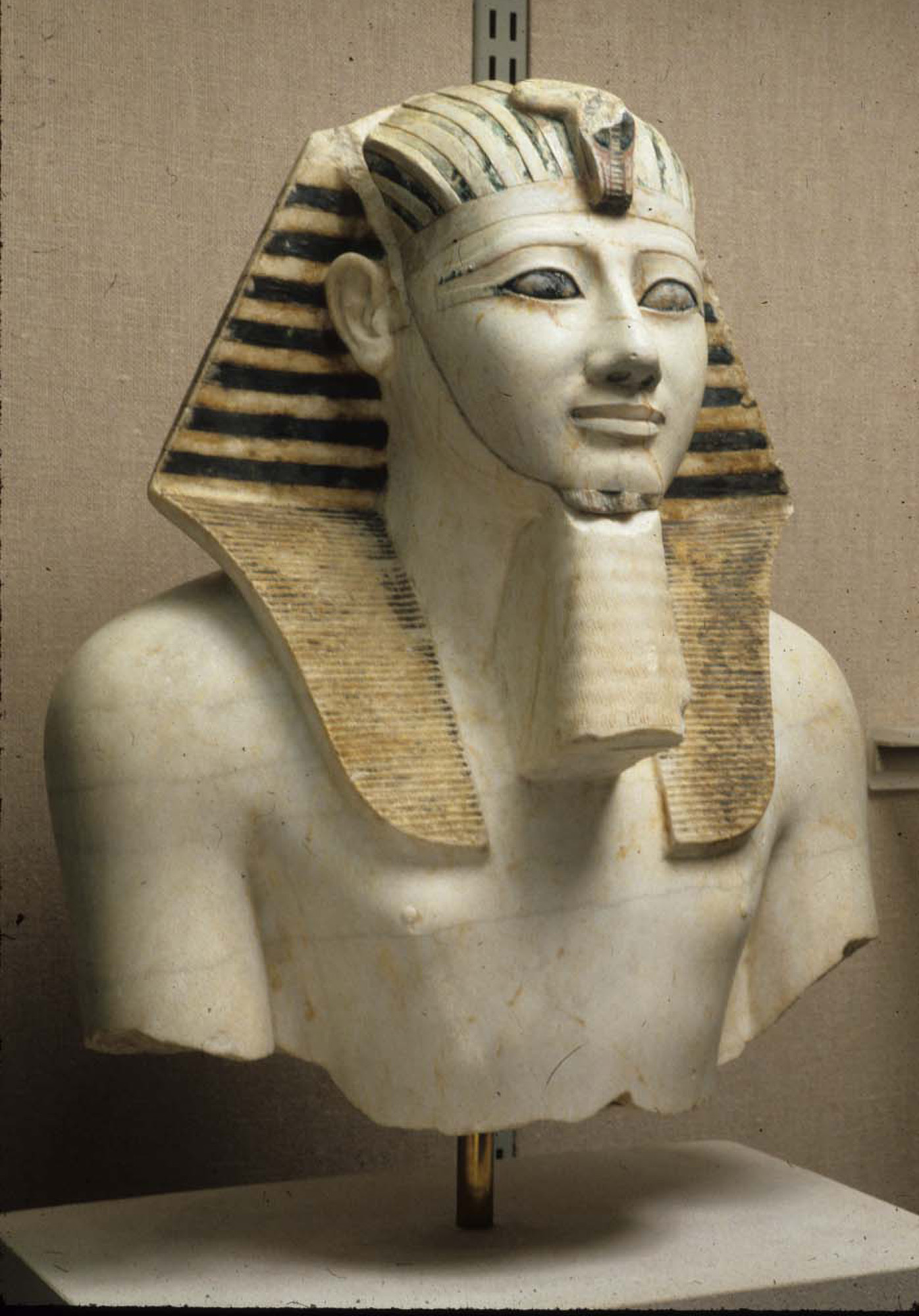|
TT20
The Theban Tomb TT20 is located in Dra' Abu el-Naga', part of the Theban Necropolis, on the west bank of the Nile, opposite to Luxor Luxor ( ar, الأقصر, al-ʾuqṣur, lit=the palaces) is a modern city in Upper (southern) Egypt which includes the site of the Ancient Egyptian city of ''Thebes''. Luxor has frequently been characterized as the "world's greatest open-a .... It is the burial place of the ancient Egyptian Mentuhirkhepeshef,Porter and Moss, ''Topographical Bibliography: The Theban Necropolis'', pp. 34–35 who was fan-bearer and mayor of Tjebu during the mid- Eighteenth Dynasty, probably during the reign of Tuthmosis III. Mentuhirkhepeshef was the son of a lady named Taysent. The scenes in the tomb include funeral ceremonies. People are shown carrying the coffin, there is a 'raising of the olive tree', and there are Nubian captives depicted. Another scene shows Mentuhirkhepeshef hunting in the desert. There are scenes showing wild sheep and one showi ... [...More Info...] [...Related Items...] OR: [Wikipedia] [Google] [Baidu] |
List Of Theban Tombs
The Theban Necropolis is located on the west bank of the Nile, opposite Luxor, in Egypt. As well as the more famous royal tombs located in the Valley of the Kings and the Valley of the Queens, there are numerous other tombs, more commonly referred to as Tombs of the Nobles (Luxor), the burial places of some of the powerful courtiers and persons of the ancient city. There are at least 415 cataloged tombs, designated TT for Theban Tomb. There are other tombs whose position has been lost, or for some other reason do not conform to this classification. See for instance the List of MMA Tombs. Theban tombs tended to have clay funerary cones placed over the entrance of the tomb chapels. During the New Kingdom they were inscribed with the title and name of the tomb owner, sometimes with short prayers. Of the 400 recorded sets of cones, only about 80 come from cataloged tombs. The numbering system was first published Arthur Weigall's 1908 ''Report on the Tombs of Shêkh Abd’ el Gûrneh ... [...More Info...] [...Related Items...] OR: [Wikipedia] [Google] [Baidu] |
Dra' Abu El-Naga'
The necropolis of Draʻ Abu el-Naga' ( ar, دراع ابو النجا) is located on the West Bank of the Nile at Thebes, Egypt, just by the entrance of the dry bay that leads up to Deir el-Bahari and north of the necropolis of el-Assasif. The necropolis is located near the Valley of the Kings. History According to the German Institute of Archeology or DAI, "Dra' Abu el-Naga is one of the longest occupied necropolis of Ancient Egypt: it was used as a burial place almost continuously between the Middle Kingdom and the early Christian (Coptic) periods, i.e. a period of ca. 2500 years. The oldest graves documented so far date to the end of the 11th dynasty (ca. 2000 B.C.). During the Seventeenth Dynasty and early 18th dynasty, kings and their wives were interred here. The social spectrum of the private necropolis ranges from simple burials with few grave goods to the burials of higher-ranking individuals e.g. the High Priests of Amun of Karnak and other high officials. In the early M ... [...More Info...] [...Related Items...] OR: [Wikipedia] [Google] [Baidu] |
Thebes, Egypt
, image = Decorated pillars of the temple at Karnac, Thebes, Egypt. Co Wellcome V0049316.jpg , alt = , caption = Pillars of the Great Hypostyle Hall, in ''The Holy Land, Syria, Idumea, Arabia, Egypt, and Nubia'' , map_type = Egypt , map_alt = , map_size = , relief = yes , coordinates = , location = Luxor, Luxor Governorate, Egypt , region = Upper Egypt , type = Settlement , part_of = , length = , width = , area = , height = , builder = , material = , built = , abandoned = , epochs = , cultures = , dependency_of = , occupants = , event = , excavations = , archaeologists = , condition = , ownership = , management = , public_access = , website = , notes = , designation1 = WHS , designation1_offname = Ancient Th ... [...More Info...] [...Related Items...] OR: [Wikipedia] [Google] [Baidu] |
Theban Necropolis
The Theban Necropolis is a necropolis on the west bank of the Nile, opposite Thebes (Luxor) in Upper Egypt. It was used for ritual burials for much of the Pharaonic period, especially during the New Kingdom. Mortuary temples * Deir el-Bahri ** Mortuary temple of Hatshepsut ** Mortuary temple of Mentuhotep II ** Mortuary temple of Thutmose III * Medinet Habu ** Mortuary temple and palace of Ramesses III ** Mortuary Temple of Ay & Horemheb * Mortuary Temple of Amenhotep III ** Colossi of Memnon * Mortuary Temple of Merneptah * Mortuary Temple of Ramesses IV * Mortuary Temple of Thutmose IV * Mortuary Temple of Thutmose III * Mortuary Temple of Twosret * Temple of Nebwenenef * Qurna ** Mortuary Temple of Seti I * Mortuary Temple of Amenhotep II * Ramesseum (Mortuary Temple of Ramesses II) Royal Necropolis * Valley of the Kings (Modern: "''Wadi el-Muluk''") * Valley of the Queens (Modern: "''Biban el-Harim''") * Royal Cache * Bab el-Gasus Necropolis * Deir el-Medin ... [...More Info...] [...Related Items...] OR: [Wikipedia] [Google] [Baidu] |
Nile
The Nile, , Bohairic , lg, Kiira , Nobiin language, Nobiin: Áman Dawū is a major north-flowing river in northeastern Africa. It flows into the Mediterranean Sea. The Nile is the longest river in Africa and has historically been considered the List of rivers by length, longest river in the world, though this has been contested by research suggesting that the Amazon River is slightly longer.Amazon Longer Than Nile River, Scientists Say Of the world's major rivers, the Nile is one of the smallest, as measured by annual flow in cubic metres of water. About long, its drainage basin covers eleven countries: the Democratic Republic of the Congo, Tanzania, Burundi, Rwanda, Uganda, Kenya, Ethiopia, Erit ... [...More Info...] [...Related Items...] OR: [Wikipedia] [Google] [Baidu] |
Luxor
Luxor ( ar, الأقصر, al-ʾuqṣur, lit=the palaces) is a modern city in Upper (southern) Egypt which includes the site of the Ancient Egyptian city of ''Thebes''. Luxor has frequently been characterized as the "world's greatest open-air museum", as the ruins of the Egyptian temple complexes at Karnak and Luxor stand within the modern city. Immediately opposite, across the River Nile, lie the monuments, temples and tombs of the west bank Theban Necropolis, which includes the Valley of the Kings and Valley of the Queens. Thousands of tourists from all around the world arrive annually to visit Luxor's monuments, contributing greatly to the economy of the modern city. The population of Luxor is 422,407 (2021), with an area of approximately . It is the capital of Luxor Governorate. It is among the oldest inhabited cities in the world. Etymology The name ''Luxor'' ( ar, الأقصر, al-ʾuqṣur, lit=the palace, pronounced , , Upper Egyptian: ) derives from the Arabic ... [...More Info...] [...Related Items...] OR: [Wikipedia] [Google] [Baidu] |
Tjebu
Tjebu or Djew-Qa, was an ancient Egyptian city located on the eastern bank of the Nile in what is now Asyut Governorate, Egypt. In Greek and Roman Egypt, its name was Antaeopolis after its tutelary deity, the war god known by the Hellenized name Antaeus. Its modern name is Qau el-Kebir or more commonly El Etmannyieh. Several large terraced funerary complexes in Tjebu by officials of the 10th nome during the Twelfth and Thirteenth dynasties represent the peak of non-royal funerary architecture of the Middle Kingdom. Cemeteries of different dates were also found in the area. The tomb of the local governor May dates to the New Kingdom. A Ptolemaic temple of Ptolemy IV Philopator, enlarged and restored under Ptolemy VI Philometor and Marcus Aurelius, was destroyed in the first half of the nineteenth century. The temple in this town was large, comparatively speaking—an 18-column pronaos, with a twelve-column hypostyle hall preceding the vestibule hall, the inner sanctum, and t ... [...More Info...] [...Related Items...] OR: [Wikipedia] [Google] [Baidu] |
Tuthmosis III
Thutmose III (variously also spelt Tuthmosis or Thothmes), sometimes called Thutmose the Great, was the sixth pharaoh of the Eighteenth Dynasty. Officially, Thutmose III ruled Egypt for almost 54 years and his reign is usually dated from 28 April 1479 BC to 11 March 1425 BC, from the age of two and until his death at age fifty-six; however, during the first 22 years of his reign, he was coregent with his stepmother and aunt, Hatshepsut, who was named the pharaoh. While he was shown first on surviving monuments, both were assigned the usual royal names and insignia and neither is given any obvious seniority over the other. Thutmose served as the head of Hatshepsut's armies. During the final two years of his reign, he appointed his son and successor, Amenhotep II, as his junior co-regent. His firstborn son and heir to the throne, Amenemhat, predeceased Thutmose III. He would become one of the most powerful pharaohs of the 18th dynasty. Becoming the sole ruling pharaoh of the ... [...More Info...] [...Related Items...] OR: [Wikipedia] [Google] [Baidu] |
.jpg)





.jpg)
